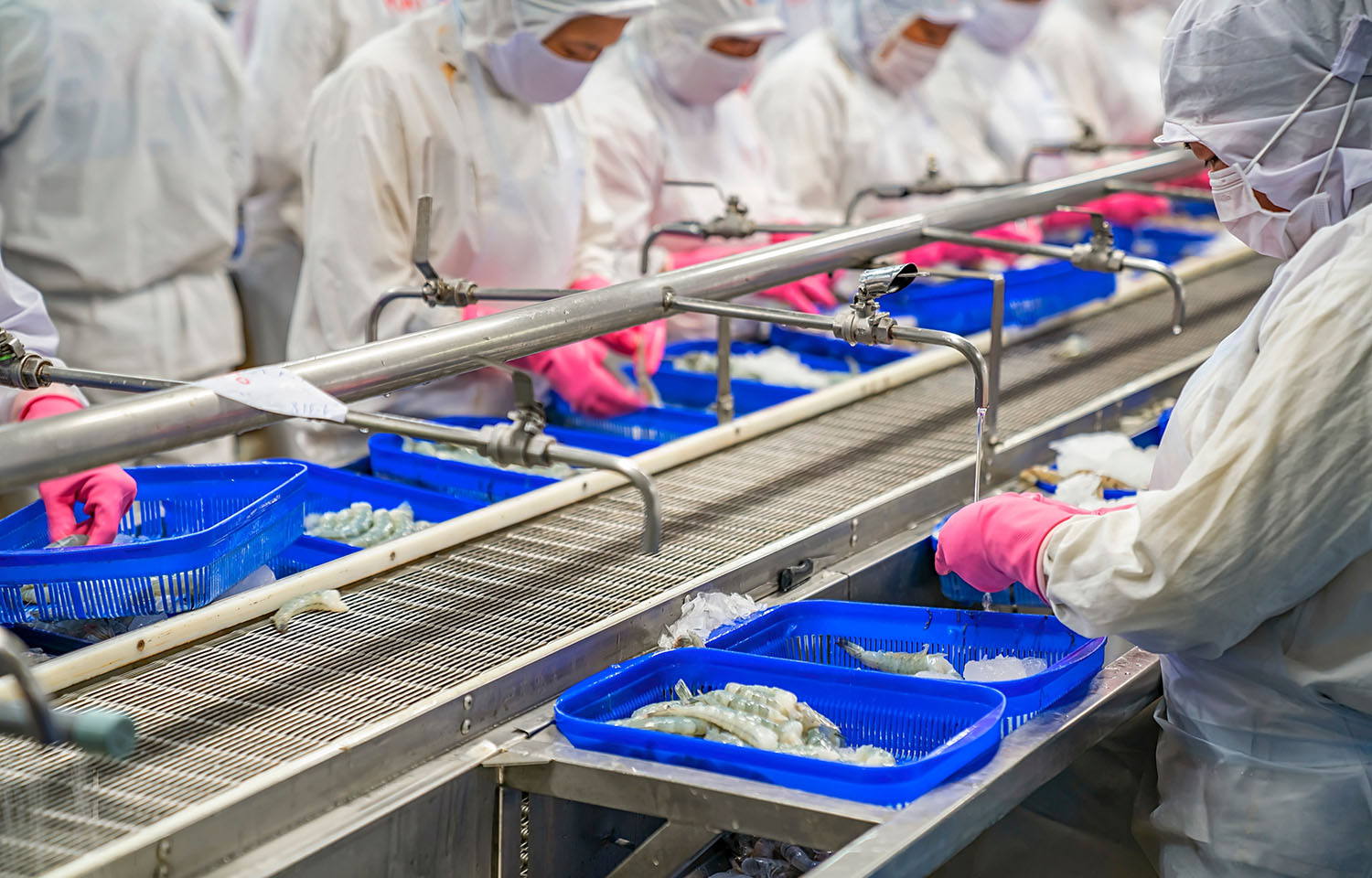A recent investigation has discovered that since the onset of the Covid-19 pandemic, producers and workers in shrimp supply chain in Vietnam are facing declining wages and increased vulnerability to forced labor.
The new report, “Laboring for Less so Supermarkets Profit More,” comes after researchers – working with independent research teams in Vietnam that were kept anonymous to protect worker identities – talked with shrimp farmers and laborers from July 2023 through May 2024. The research team conducted more than 150 interviews across the sector and found that workers and farmers in Vietnam’s shrimp industry are facing an increasingly difficult financial environment due to the drop in shrimp prices, creating conditions conducive to the employment of forced labor.
According to the report, the take-home earnings of a shrimp worker in Vietnam have declined by between 20 percent and 60 percent since the start of the Covid pandemic. The root cause, it said, is retailers and wholesalers driving down the price of shrimp even as producers are hit with higher farming costs.
Katrina Nakamura, owner and operator of research organization The Sustainability Incubator and the author of the report, told SeafoodSource high costs and dropping prices are continuing even as demand for shrimp increases.
“We collected earnings, costs, and pricing data equally from workers and producers at every tier, and then went on to collect pricing data along the market side of the supply chain (earnings and costs where we could),” Nakamura said in an email. “The in-country data confirmed a very significant earnings decline at every tier since the pandemic for shrimp workers and producers other than middlemen and feed firms.”
That earnings decline across the sector is impacting farmers of all stripes.
“[Even] farmers who invested in super-intensive systems and new technology were not capturing the promised value addition, but were losing money year to year from low prices,” Nakamura said.
As prices fall and shrimp producers continue to struggle, research on the market side showed that other parts of the shrimp industry have been doing well – in the cases of some retailers, even posting unprecedented profits, Nakamura said.
“Empirically, it appears very much like producers and workers in Vietnam's shrimp sector are subsidizing those profits,” she said. “Vietnam is known for its innovation, value-addition and efficiency from highly skilled workers. The workers we spoke to said they are working faster and more hours to try to make up the lost earnings, but are not earning enough to save money.”
The report offered six key findings: A significant decline in worker earnings in Vietnam has taken place since the pandemic, market consolidation may be driving the wholesale shrimp price to drop, farmers are being squeezed by higher costs and lower prices, large processing and feed firms are hiring intermediaries to buy shrimp at lower prices, full traceability does not exist in the supply chain due to the nature of the marketplace, and “wider concerns” indicate the market could be becoming irrational.
Nakamura said the situation in Vietnam is different than the troubles facing India's shrimp sector, but one equally troubling for labor rights.
India’s shrimp industry recently came under fire after independent reports by the Corporate Accountability Lab, Associated Press, and Outlaw Ocean revealed suspected labor and human rights abuses at Indian shrimp companies, with one whistleblower giving SeafoodSource a first-hand account of labor abuses. In the wake of the reports, the U.S. Department of Labor added shrimp manufactured in India to the 2024 “List of Goods Produced by Child Labor or Forced Labor.”
“India and Vietnam might represent two ends of a spectrum of consequences from the race to the bottom for ever-cheaper shrimp. In the case of shrimp from Vietnam, the driver of exploitation is leverage over price on the import side of trade, with indications that the biggest driver of worsening conditions could actually be the procurement specifications of large supermarkets,” Nakamura said. “The large supermarkets require a lot of costly specifications but appear to have been paying prices for shrimp that are lower than what shrimp can be made for.”
Her research also found that ...








